Reviews
Google Pixel 8 Pro Review.
I’ve been using the Google Pixel 8 Pro for some time now and thus far, it has performed flawlessly. Fortunately, the Pixel 8 Pro has been nothing but incredible. Although the Google Pixel 8 Pro isn’t flawless, it is the closest that Google has ever come to creating a perfect Android phone. Despite this, I’m still enamoured with the device.
I appreciate the design of the phone, and the screen is superb, the cameras are still top-notch. I love taking pictures with the Pixel 8 Pro so much that I increased my Google Photos subscription in order to switch my photo library from Apple Photos.
Though battery life and charging speeds remain problematic, I cannot help but still be smitten with the Pixel 8 Pro. It’s one of my favorite smartphones of 2023, and I look forward to continuing to use it in the coming weeks and months.
The Design of the Google Pixel 8 Pro
It has often been stated that Pixel phones are more focused on software than hardware, yet the Pixel 8 Pro appears to have disregarded this notion. Out of the smartphones I’ve used this year, the Google Pixel 8 Pro boasts some of the best hardware.
The Pixel 8 Pro’s design is much improved over its predecessor, the Google Pixel 7 Pro. Its back is made with a matte finish that is both pleasant to the touch and smooth in the hand. Rather than the dual-camera cutouts on the 7 Pro, the 8 Pro has a single, continuous cutout that runs along its camera bar. Its corners are more rounded, creating a comfortable grip for the user.
A comparison of the Google Pixel 8 Pro and Google Pixel 7 Pro can be seen with the two phones being side-by-side.
The differences between the Pixel 8 Pro and the Pixel 7 Pro may seem trivial when looking at them on paper; however, the moment you hold them side by side the progress made by Google’s hardware team in one calendar year is evident. The texture of the back glass, the buttons, and the overall comfort of the phone are all remarkable and I can’t find anything to fault.
I must give kudos to Google for the captivating Bay blue color that can be seen throughout this review. It has a beautiful baby blue shade that is tranquil and calming in a manner that is hard to articulate.
The combination of the silver camera bar and black camera lenses with the blue shade of the phone is spectacular. The hue of the blue is vivid no matter how the light reflects off of it, but not too strong. It would be nice if there were more options than just the Bay shade, Obsidian, and Porcelain (black and white), however the blue color will be remembered for a long time.
The Display of the Google Pixel 8 Pro
The Google Pixel 8 Pro features a screen that is sure to impress. Its remarkable visual quality is achieved by the use of advanced technologies to deliver an outstanding experience. The display of this device is vibrant and clear, providing users with a stunning viewing experience.
This year’s Google Pixel 8 Pro has a 6.7-inch OLED display with a resolution of 2992 x 1344 pixels. Though the display is quite similar to the Pixel 7 Pro, there are a few noteworthy improvements.
The 120Hz refresh rate is back and operates just as well as before, providing a seamless scrolling and animation experience. One major difference is that it now has the capability to scale down to 1Hz instead of 10Hz, meaning it has a much lower energy consumption for things such as the always-on display or web browsing on Google Chrome. Additionally, the Pixel 8 Pro has an impressive peak brightness rating of 2,400 nits, which is 400 more than the iPhone 15 Pro Max’s 2,000 nits. This high peak brightness was especially helpful when I was out-and-about, whether it was walking the High Line in New York City or enjoying some sun in Michigan, I never had any issues viewing the Pixel 8 Pro’s screen.
My iPhone 15 Pro Max and the Google Pixel 8 Pro are very similar, however, Google has gone the extra mile to make sure I never have to worry about it. One thing I really enjoy is how dim the display gets when the brightness is at its lowest setting. This is especially useful when I’m using my phone in a dark room late at night and don’t want to wake my partner.
The Pixel 8 Pro’s refresh rate and brightness are better than ever, and the display as a whole is outstanding. The sharpness, colors, and symmetry of the bezels are all flawless. Google hit a home run with the screen, just like they did with the design.
The Pixel 8 Pro’s Cameras
So, let’s discuss the Google Pixel 8 Pro’s cameras. It has the same triple-camera system as the Pixel 7 Pro, featuring a main, ultrawide, and telephoto lens. Each of these have been improved in meaningful ways.
The primary 50-megapixel camera offers an f/1.68 aperture, enhancing light sensitivity by 21%. It also offers 2x optical zoom. The new 48MP ultrawide camera has an f/1.95 aperture, resulting in a 105% improvement in light sensitivity, and allowing for macro shots as close as 2 centimeters away. The 48MP telephoto lens’s light sensitivity has been increased by 56%, with an f/2.8 aperture and 5x optical zoom. The 10.5MP front-facing shooter now has autofocus and an f/2.2 aperture.
The Google Pixel 8 Pro is capable of taking remarkable pictures, and the numerical results verify this.
It’s not shocking that a Pixel 8 Pro by Google can take amazing pictures, considering it is equipped with a 50MP primary camera. Even in the year 2023, the Pixel 8 Pro will still be providing users with remarkable images.
Regardless of the lighting conditions, I’m confident that the Google Pixel 8 Pro will deliver a photo that I’m content with. What’s even better is the ease of use; simply point the camera at the subject, press the shutter button, and I can confidently expect a top-notch image.
The Pixel 8 Pro’s 5x telephoto lens gives a strong performance. It’s not the 10x optical zoom like on the Samsung Galaxy S23 Ultra, but its sensor is of top notch quality. Images taken at its 5x range are full of details and colors that match those taken with the main camera. Even when the zoom is cranked all the way up to 30x, the Pixel 8 Pro still provides pictures that are more than satisfactory.
I believe the improved light sensitivity more than compensates for not having a larger optical zoom range. The pictures taken from the telephoto camera are stunning, with excellent sharpness, captivating colors, and the capacity to get close to the subject without compromising the quality of the image.
My experience with both the ultrawide and selfie cameras has been very satisfactory. Just like the telephoto lens, the ultrawide lens captures the same colors as those taken with the main camera. You get a much bigger angle of view with only a little bit of edge distortion. It can be visible if you take a closer look, but the 125.5-degree field-of-view does a decent job.
The Pixel 8 Pro has an impressive 50MP primary camera. The selfie camera proves to be reliable. The autofocus feature added this year is a considerable improvement and functions well. Portrait mode may be occasionally fooled by some stray hairs, but there is not much to be disapproving of.
My smartphone camera experience is not usually enhanced by having a Pro/Manual mode, however, the Google Pixel 8 Pro has just added this function to its camera app, giving users control over their brightness, shadows, ISO, and other options.
AI-driven image editing comes to the Google Pixel 8 Pro
The Pixel 8 Pro is known for taking great photos with no need for editing, but if you’re looking to adjust your images, there are some interesting features available to explore.
With the Best Take feature, you can take a picture with your friends or family and not worry if not everyone is smiling or looking at the camera. You can take multiple shots and won’t have to worry about it not being perfect. If you have a Pixel 8 Pro, you can locate these pictures in Google Photos, tap the Edit button on any one of them, and then select Best Take.
The Pixel 8 Pro provides the ability to substitute someone’s face with a better shot from other similar photos without resorting to AI-based recreation. Although it may not always be flawless, and there may be a slight delay in the feature loading, the end result is quite remarkable.
The Pixel 8 Pro is bringing the Magic Editor to the table. When a photo is uploaded to Google Photos, this Editor offers the capability to erase and manoeuvre objects/people, change the sky, add and remove portrait effects, and more. In a way, it’s like having a powerful Photoshop-like AI program in the palm of your hand.
Regardless of any other feelings, one has to be impressed with the Pixel 8’s photo-editing functions. It is remarkable that no prior training is needed to produce such great edits. The Best Take and Magic Editor tools will absolutely amaze many individuals.
The Battery and Charging Capabilities of the Google Pixel 8 Pro
Performance, dependability, and heat control have all been improved with the Tensor G3 upgrade, yet the battery life doesn’t appear to have benefitted from these advancements.
The battery of the Google Pixel 8 Pro is nothing extraordinary compared to some of the other Android phones I have used in the past year. For instance, if I use my phone starting at 7:30 or 8 in the morning, by 10:30 at night it usually has anywhere from 15% to 5% of its charge left, with around 5 hours of screen-on time.
During my evaluation, I made an effort to utilize the Pixel 8 Pro as much as possible. Had I not used it so frequently, I suppose I could have gone part of a second day before charging it again. In comparison to smartphones from Samsung, Motorola, and OnePlus, which can last two days with a comparable level of use, I had greater hopes for the 5,050mAh battery of the Google Pixel 8 Pro.
The Google Pixel 8 Pro is equipped with a USB-C port.
The charging speed of the Google Pixel 8 Pro is subpar compared to other Android phones. With its maximum wired charging speed of 30 watts, I experienced a 12% charge after 10 minutes and 29% after 25 minutes. To fully recharge the battery took almost 90 minutes. This is a slight improvement from the Pixel 7 Pro, but it could still be better.
It is apparent that there is space for improvement when it comes to charging speed with Google, as other firms have been sluggish too. However, phones such as the OnePlus 11 can reach full battery in only 25 minutes, highlighting the potential for Google to progress.
If you’re willing to accept slower charging speeds, the Pixel 8 Pro is also compatible with up to 12W Qi wireless charging (or 23W with the Google Pixel Stand). It also has reverse wireless charging capabilities, meaning other wireless devices can be powered up with the back of the Pixel 8 Pro. Although it has a decent battery and charging setup, I’m hoping that Google makes some advances in this area for the Pixel 9.
The Google Pixel 8 Pro stands out among the crowd of smartphones. Undoubtedly, the year 2023 has brought us an abundance of remarkable cell phones, some of which stand up against the Google Pixel 8 Pro. If you have $999 to invest and are searching for the ideal blend of excellent design, display quality, camera capabilities, AI abilities and reliable software, then this is the phone you should purchase.
Reviews
itel RS4 Review

itel, a prominent player in the budget smartphone market, has unveiled its latest offering, the itel RS4. Packed with features typically found in higher-priced models, the RS4 aims to redefine what users can expect from an affordable smartphone.
Design and Display
The itel RS4 boasts a sleek design, measuring just 8.2mm in thickness and weighing in at 198g. Its dual SIM capability ensures users can stay connected on the go. The device features a vibrant 6.56-inch IPS LCD display with a high refresh rate of 120Hz, providing smooth visuals for an immersive viewing experience.
Performance
Powered by Android 13 and equipped with a Mediatek Helio G99 Ultimate chipset, the itel RS4 delivers robust performance for everyday tasks and multitasking. With an octa-core CPU consisting of 2×2.2 GHz Cortex-A76 and 6×2.0 GHz Cortex-A55 cores, coupled with Mali-G57 MC2 GPU, users can expect seamless performance whether gaming, streaming, or browsing the web.
Camera
Capture every moment in stunning detail with the itel RS4’s 50MP wide-angle main camera, featuring autofocus and LED flash. On the front, an 8MP selfie camera ensures crisp and clear self-portraits and video calls.
Memory and Storage
The itel RS4 comes in multiple configurations, including 128GB/8GB RAM, 256GB/8GB RAM, and 256GB/12GB RAM variants, providing ample storage space for apps, photos, and media files.
Battery and Charging
With a large 5000mAh battery, the itel RS4 ensures all-day usage on a single charge. Additionally, its 45W wired charging capability with bypass charging technology allows users to quickly recharge their device, reaching 80% capacity in just 30 minutes.
Connectivity and Features
Stay connected wherever you go with the itel RS4’s comprehensive connectivity options, including WLAN, Bluetooth, GPS, NFC, and USB Type-C. The device also features a side-mounted fingerprint sensor for added security, along with accelerometer and gyro sensors.
Colors and Pricing
Available in Silvery White, Elegant Beige, and Lurex Black, the itel RS4 offers users a choice of stylish colors to suit their preferences. With an estimated price of around 100 EUR, the RS4 delivers exceptional value for budget-conscious consumers.
In conclusion, the itel RS4 sets a new standard for budget smartphones, offering premium features at an affordable price point. Whether you’re a casual user or a power user, the RS4 delivers on performance, camera capabilities, and battery life, making it a compelling choice in the competitive budget smartphone market.
Reviews
Armor 26 Ultra Unveiled with 15,600mAh battery
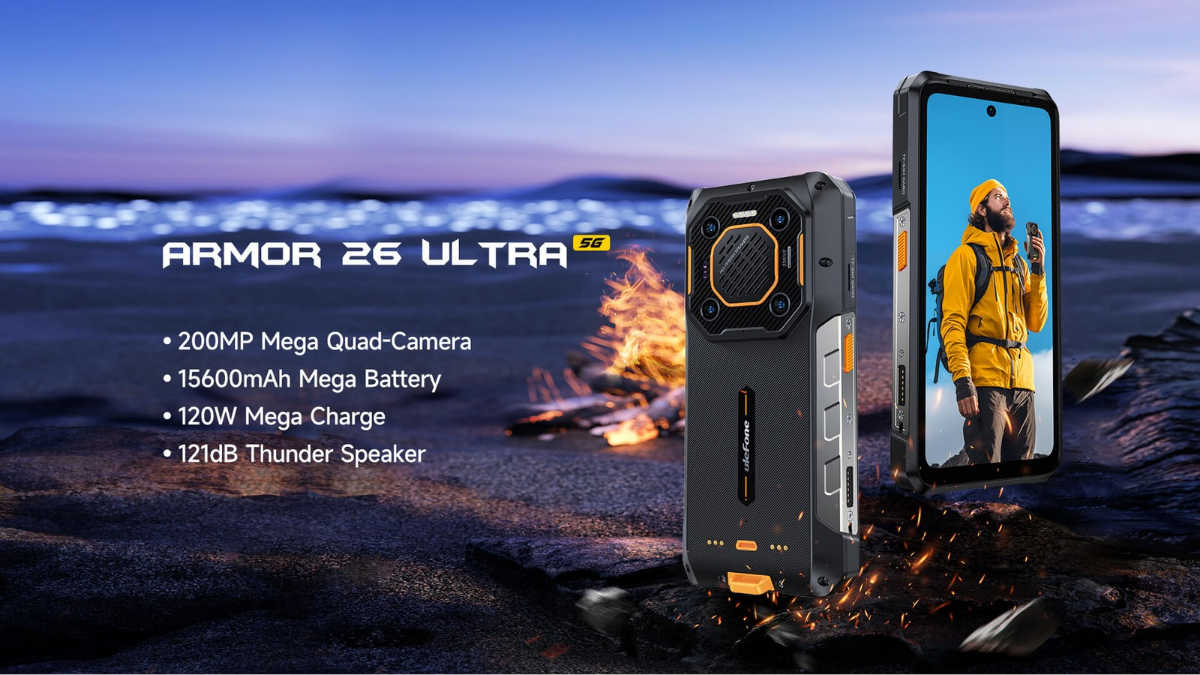
Ulefone has recently unveiled its latest flagship smartphone, the Armor 26 Ultra, promising to redefine the standards of rugged smartphone technology. With a plethora of features tailored to cater to the needs of adventurers and professionals alike, the Armor 26 Ultra stands out as a robust and versatile device.
Design and Durability
The Armor 26 Ultra boasts a rugged design, exuding durability and resilience. Measuring 179 x 83 x 25.5 mm and weighing 609 g, this device is built to withstand the harshest conditions. It is IP68/IP69K certified for dust and water resistance, capable of surviving submersion up to 2 meters for 30 minutes. Additionally, it meets MIL-STD-810H standards for drop and shock resistance, ensuring reliable performance even in challenging environments.
Display and Performance
Featuring a 6.78-inch IPS LCD display with a 120Hz refresh rate, the Armor 26 Ultra delivers smooth and immersive visuals. With a resolution of 1080 x 2460 pixels and Corning Gorilla Glass 5 protection, users can expect crisp and vibrant images, even in outdoor settings. Powered by the MediaTek Dimensity 8020 chipset and 12GB of RAM, this device offers seamless multitasking and lag-free performance.
Camera Capabilities
Equipped with a powerful quad-camera setup, including a 200 MP main camera, an 8 MP telephoto lens with 3.2x optical zoom, a 50 MP ultrawide lens, and a 64 MP infrared night vision camera, the Armor 26 Ultra ensures stunning photography in any lighting conditions. Whether capturing landscapes or detailed close-ups, users can expect exceptional clarity and detail in their images and videos.
Battery and Charging
One of the standout features of the Armor 26 Ultra is its massive 15,600mAh battery, providing unparalleled battery life. With support for 120W wired fast charging, 33W wireless charging, and reverse charging, users can stay powered up and connected throughout their adventures without interruption.
Connectivity and Features
The Armor 26 Ultra offers comprehensive connectivity options, including support for GSM, CDMA, HSPA, LTE, and 5G networks. With dual SIM capability and a dedicated microSDXC slot, users can expand their storage and stay connected wherever they go. Other notable features include a side-mounted fingerprint scanner, facial recognition technology, NFC, and an infrared port.
Price and Availability
The Ulefone Armor 26 Ultra is available for purchase at a price of $600. Both the standard and walkie-talkie variants can be ordered from Ulefone’s official store on AliExpress, with shipping starting on May 13, 2024.
In conclusion, the Ulefone Armor 26 Ultra sets a new standard for rugged smartphones, offering unparalleled durability, performance, and versatility. Whether you’re an outdoor enthusiast, a professional in challenging environments, or simply someone who values reliability in their mobile device, the Armor 26 Ultra is sure to exceed your expectations.
Reviews
Xiaomi Pad 6S Pro 12.4 Review

Xiaomi continues to push boundaries in the realm of technology with its latest release, the Xiaomi Pad 6S Pro 12.4. Announced on February 22, 2024, this cutting-edge tablet boasts an array of features that promise to elevate the user experience to new heights.
Design and Display
The Xiaomi Pad 6S Pro 12.4 showcases a sleek and sophisticated design, with dimensions measuring 278.7 x 191.6 x 6.3 mm and a weight of 590g. Its build includes a durable combination of Gorilla Glass 5 on the front, an aluminum frame, and an aluminum back. The device also offers stylus support, making it ideal for creative professionals and note-takers.
Featuring a stunning 12.4-inch IPS LCD display with 144Hz refresh rate, HDR10, and Dolby Vision support, the Xiaomi Pad 6S Pro delivers vibrant colors and immersive visuals. With a resolution of 2032 x 3048 pixels and a peak brightness of 900 nits, every detail comes to life with clarity and precision.
Performance and Hardware
Under the hood, the Xiaomi Pad 6S Pro is powered by the latest Android 14 operating system, coupled with HyperOS for seamless multitasking and enhanced performance. It houses the Qualcomm Snapdragon 8 Gen 2 chipset, built on a 4nm process, ensuring lightning-fast speed and efficiency.
Equipped with an octa-core CPU and Adreno 740 GPU, this tablet delivers exceptional performance for gaming, productivity, and multimedia tasks. Users can choose from multiple configurations, including options with up to 1TB of storage and 16GB of RAM, providing ample space for apps, games, and media files.
Camera and Audio
The Xiaomi Pad 6S Pro features a dual-camera setup on the rear, comprising a 50MP wide lens and a 2MP depth sensor, capable of capturing stunning images and videos in various lighting conditions. On the front, a 32MP wide selfie camera ensures crisp and clear video calls and selfies.
In the audio department, the tablet comes equipped with stereo speakers, delivering immersive sound quality for multimedia consumption. With support for 24-bit/192kHz Hi-Res audio and Hi-Res Wireless audio, users can enjoy an enhanced listening experience with rich, detailed sound.
Connectivity and Battery
Connectivity options on the Xiaomi Pad 6S Pro include Wi-Fi 802.11 a/b/g/n/a/6/7, Bluetooth 5.3, NFC for file transfer, and a USB Type-C 3.2 port for charging and data transfer. The tablet also features a side-mounted fingerprint sensor for added security and convenience.
One of the standout features of the Xiaomi Pad 6S Pro is its massive 10,000mAh battery, providing long-lasting power for extended usage sessions. With support for 120W wired charging, users can recharge their device quickly, with advertised charging times of 45% in just 10 minutes and 100% in 35 minutes.
Price and Availability
The Xiaomi Pad 6S Pro is available in a range of attractive colors, including Black, Blue, and Green, catering to different style preferences. With a price tag of approximately 700 EUR, this tablet offers exceptional value for money, combining premium design, powerful performance, and innovative features.
-
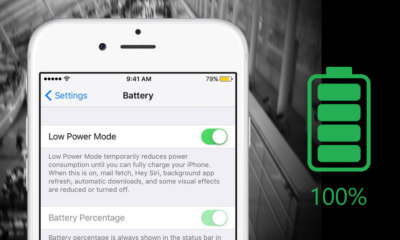
 How To8 months ago
How To8 months agoHow To Make Your Battery Last Longer On Your Gadget
-

 How To6 months ago
How To6 months agoHow To Use Voice Commands for Hands-Free Control.
-

 How To6 months ago
How To6 months agoHow To Unlock Your Smartphone If You Forget the PIN
-
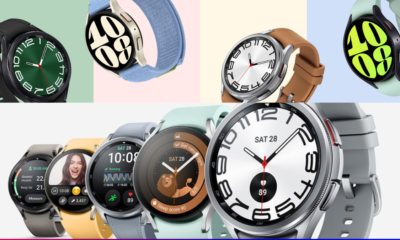
 Reviews9 months ago
Reviews9 months agoSamsung Galaxy Watch 6 vs. Galaxy Watch 6 Classic: A Timeless Face-off!
-
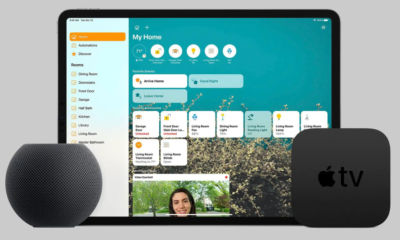
 Best Smart Home Gadgets7 months ago
Best Smart Home Gadgets7 months agoHow To Set Up a Smart Home: A Comprehensive Guide
-
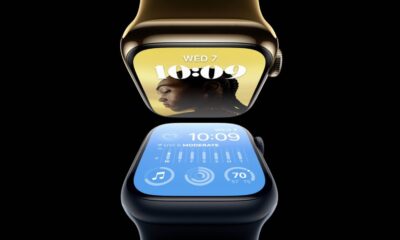
 Tech News9 months ago
Tech News9 months agoGurman: Apple Watch Redesigned ‘Apple Watch X’
-
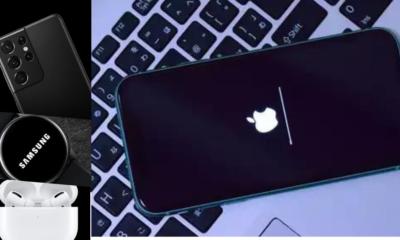
 How To6 months ago
How To6 months agoHow to Troubleshoot Common Gadget Problems
-
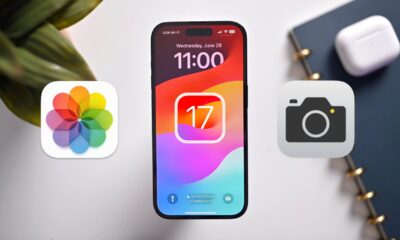
 Apps9 months ago
Apps9 months agoPhoto Magic: How To Use Quick Crop on iPhone Photos App iOS 17

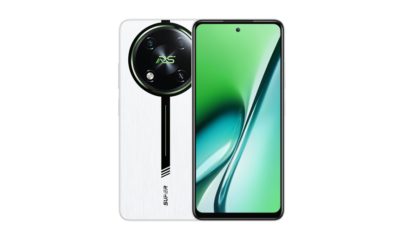







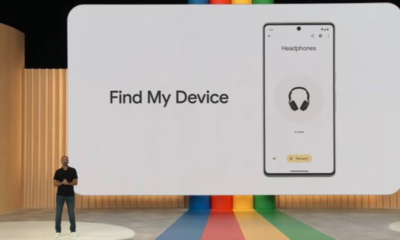



Pingback: OnePlus 11 Review - Ibe Gadget Reviews